Asset
Delivering operational intelligence through real-time situational awareness
- Reduce equipment loss, overbuys, and rental spend
- Improve staff efficiency and satisfaction
- Never leave clinical staff without clean equipment
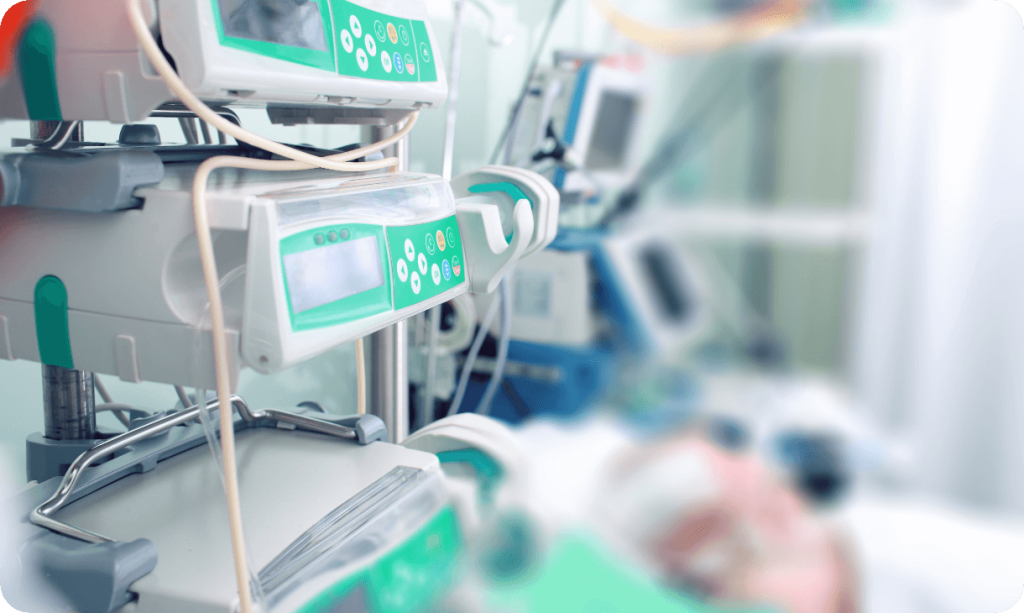

Never leave your nurses without clean equipment again
25%
the portion of nurses’ time spent searching for equipment
Nursing Times, GE Healthcare
The best asset tracking solution is the ones nurses NEVER need to use. Leveraging room-level visibility Cognosos enables hospitals to automate their equipment distribution process, ensuring nurses have equipment in advance of when it’s required which reduces the technical usage burden for clinical staff.
Improve time to clinical care and keep your nurses happy by always having clean equipment where it’s needed, when it’s needed.
Clinical teams shouldn’t search for equipment
Don’t outsource asset location problems to the clinical team, ensure they have what they need, when, and where it’s needed.
Remove the need for staff to hoard equipment
Build nurse’s confidence and make their life easier by always having clean equipment available.
Eliminate equipment delays impacting clinical care
Clean equipment where you need it, when you need it – don’t let lack of equipment impact start times and procedural throughput.
Your success is our mission
Customer stories
We are dedicated to ensuring that our customers achieve their goals and realize the full value of real-time visibility. Discover how businesses like yours have achieved success with our AI-powered location intelligence.
We’ve noticed that our caregiver teams are getting more confident in the availability of medical equipment that they need to take care of their patients. We’re relieving them from the burden of looking for equipment, which is really time consuming and stressful for the nursing team. Now they can direct their energy and time towards patient care, which is really their primary task.
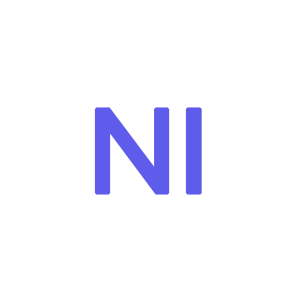
Nabil Ibrahim
JAMAICA HOSPITAL MEDICAL CENTER
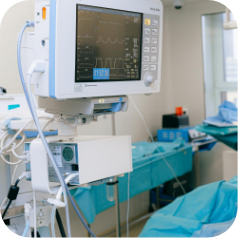
MediSys Health Network
JHMC Leverages Cognosos' LocationAI® to Achieve Fast ROI
Our process explained
Automating the equipment distribution process
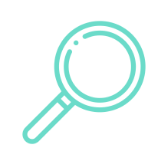
STEP 01
Clean and soiled rooms self monitor
Self-monitoring clean and soiled rooms will automatically keep track of and update the amount of equipment in each room, by asset type.

STEP 02
Receive automated alerts
Alerts automatically trigger when clean or soiled rooms require action before dwindling equipment levels become urgent.
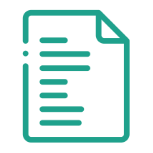
STEP 03
Replenishment is made easy
Remotely pull the required pick list for each room to complete the replenishment process.
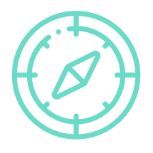
STEP 04
Nurses don’t have to find equipment
Clean equipment is always where it is needed, when it is needed, eliminating tons of wasted time.
Smart Investment
Proven value. Rapid ROI.
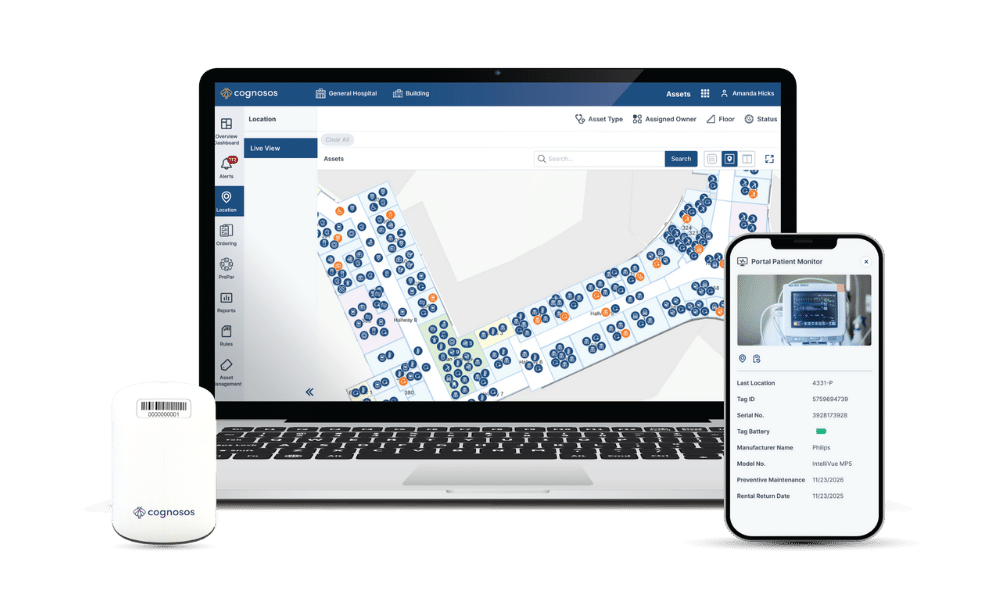
How we’re different
Invest in operational intelligence, not infrastructure

Precise accuracy, with much less infrastructure
AI-powered location enable room-level accuracy with up to 80% less infrastructure.

No large upfront hardware costs
Self-funded SaaS model delivers quicker ROI and provide maximum budgeting flexibility.

No Wi-Fi impact or limitation
Operating on a dedicated low latency network separate from the main hospital Wi-Fi.

Class-leading software
Powerful, intuitive, and built for adoption based on modern technology stack.
$2-$4K
the average savings per bed for hospitals using asset tracking
HFMA, Frost & Sullivan
25%
the portion of nurses’ time spent searching for equipment
Nursing Times, GE Healthcare
20-30%
the annual loss or theft rate for mobile medical equipment
Advisory Board, Becker’s
20-30%
the average equipment over-purchase due to lack of visibility
GE Healthcare, HIMSS
40%
of hospital equipment that goes underutilized
Source: ECRI, AHA Tech Reports
Stop buying mobile medical equipment you don’t need
92%
Decrease in lost equipment at a customer’s site
Cognosos
You’d never run out of clean equipment if you knew in real time where everything was. Hospitals purchase too much equipment when poor visibility of equipment distribution leads to equipment shortages and poor utilization.
Fix the underlying problems to ensure you are getting the most out of the equipment that you already own and drive significant savings.
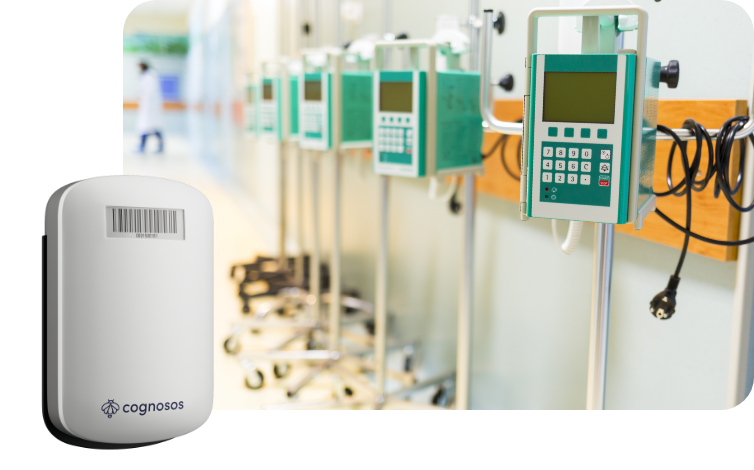
Improve your equipment utilization
Increasing the availability of clean equipment leads to increased equipment utilization, enabling you to strategically right-size your fleet.
Reduce unnecessary equipment purchases
Use historical insights to make data-backed mobile medical equipment procurement decisions ensuring you only buy what you need, therefore saving you money.
Stop renting equipment you already own
Increasing your equipment utilization and reducing the amount of lost assets reduces rental costs.
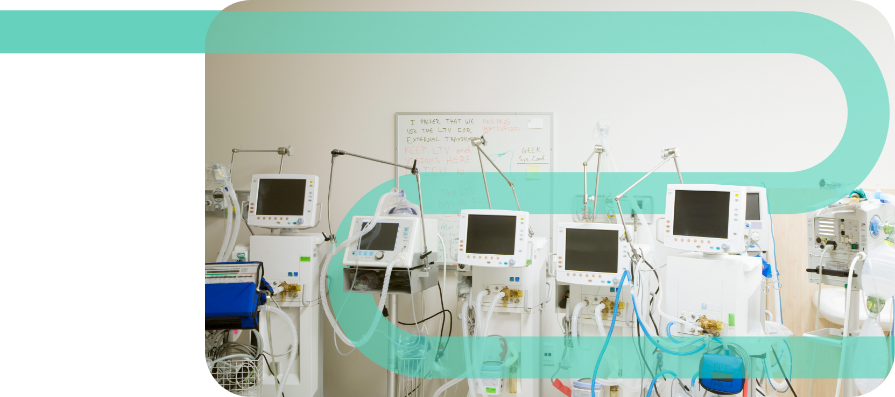
Stop equipment before it leaves
~25%
the annual loss or theft rate for mobile medical equipment
Advisory Board, Becker’s
Hospitals lose millions of dollars each year on lost and stolen equipment. Cognosos helps reduce these losses which can have a massive impact on operating margin.
Reduce mobile medical equipment loss
Automated alerts let you know when equipment moves into restricted zones to enable users to prevent loss such as laundry, trash, accidental theft, or transfers.
Never misplace equipment ever again
Instantly find mobile medical equipment with AI-powered location data, and look up historical moves to identify bottlenecks.
Stop wasting time searching for lost equipment
Eliminate time wasted looking for assets for preventative maintenance and service that are no longer in the building.

Asset
Cognosos Asset
Request a demo
Everything you need to know about
Hospital asset management & tracking
What is hospital asset management?
Asset management in hospitals encompasses strategic planning, procurement, utilization monitoring, and lifecycle management. It strives to find the optimal asset utilization while minimizing unneeded asset over-buys and simplification of regulation compliance. Effective asset management supports long-term financial sustainability and operational efficiency in healthcare settings, crucial for maintaining high standards of patient care. Hospital asset management is known by various names, including Clinical Asset Management, Real-Time Asset Management, Mobile Asset Management, Biomedical Asset Management, Hospital Equipment Management, and Mobile Medical Equipment Management.What is the difference between hospital asset management and asset tracking?
Hospital asset management involves the strategic oversight of assets throughout their lifecycle, including planning, procurement, utilization, and disposal. It focuses on optimizing asset use, controlling costs, and ensuring compliance. In contrast, hospital asset tracking specifically refers to the process of monitoring and locating assets in real-time within the hospital environment. Both are essential for maintaining optimal healthcare delivery and resource management in hospitals.
What is the difference between hospital assets management & inventory control?
Hospital asset management focuses on strategic planning and lifecycle management of high-value assets, while inventory control concentrates on the operational management of consumables and supplies necessary for daily patient care and hospital operations. Both are essential for efficient healthcare delivery, cost control, and ensuring high standards of patient care.What is the difference between CMMS and asset management
Computerized Maintenance Management Systems (CMMS) primarily focuses on maintenance activities related to equipment and facilities. It encompasses scheduling preventive maintenance, managing work orders, tracking repairs, and ensuring regulatory compliance. Asset Management in hospitals extends beyond maintenance to encompass the entire lifecycle of assets. It involves strategic planning, procurement, utilization tracking, depreciation management, and eventually disposal or replacement. While CMMS and asset management share the goal of optimizing asset performance, their scopes differ significantly. CMMS is more operational, focusing on day-to-day maintenance tasks and ensuring equipment reliability. In contrast, asset management takes a broader, more strategic approach, considering financial planning, risk management, operational workflows, and long-term asset lifecycle management.
What is RTLS asset tracking?
What is RTLS asset tracking?
Hospital RTLS solutions actively locate assets in real time and are commonly used for equipment distribution of critical mobile medical devices. These solutions take a strategic approach, considering financial planning, risk management, operational workflows, and long-term asset lifecycle management. Artificial Intelligence (AI)/Bluetooth (BLE) Wi-Fi Bluetooth (BLE) Infrared Ultrasound
What is RFID asset tracking?
What is RFID asset tracking?
An enterprise wide RTLS can help hospitals comply with Joint Commission, OSHA regulatory requirements as well as state by state legislation and guidelines, all of which are designed to mandate the development of work place violence programs and initiatives for staff safety in hospitals. . In general, RTLS solutions use a badge or similar device equipped with a button that staff can push discreetly in the event of an emergency. When the button is pushed, it sends a message to the RTLS, which can pinpoint the location of the staff member in distress, even if the person is moving around the hospital. The RTLS can also integrate with a hospital’s other technology systems, including public address and security systems, to facilitate a multi-tiered incident response.
What are the main benefits to tracking assets in a hospital?
Real time asset management in hospitals provides a multitude of benefits that streamline operations, increases staff capacity, reduces unneeded asset spend and enhances patient care.Who benefits from having better visibility to manage assets?
Increasing availability to mobile medical equipment provides benefits across the board for facilities. From the front line nurse and biomedical professionals who will save time looking for clean equipment to the hospital administration who will realize cost savings from reducing asset overbuys and unneeded rental expenses. Patients also realize benefits through reduced wait times and an overall better experience.How does hospital RTLS asset management solutions work?
A hospital’s Real-Time Locating System (RTLS) asset management system operates through a sophisticated network of tags and sensors attached to various mobile equipment. These tags communicate location data which enables the system to locate its movement within the hospital and provide real time updates, history and alerts. Additionally, the asset management system should be integrated into the hospital’s workflow processes to give guidance for operational efficiency. Some RTLS platforms may also incorporate artificial intelligence (AI) which allows for an ultra-light infrastructure which dramatically simplifies the implementation process and accelerates ROI. Real-time asset management systems can deliver actionable insights that can optimize asset utilization and predict future needs which significantly improve operational efficiency, enhance patient care, and ensure optimal use of their assets.
What are the components to a Hospital asset management solution?
The main components of a real-time asset management system consists of a mixture of hardware and software. A sensory network and an asset tag or a mobile device with on-board communication such as bluetooth typically represents the needed hardware. Legacy RTLS providers may also require dedicated low voltage wiring run throughout the facility to power and operate their systems. The software side consists of a user interface, a program that deciphers the hardware signals to deliver the location as well as a reporting interface. Legacy RTLS providers typically provide software at the hospital or On-Premise whereas newer entrants utilize the cloud and cloud with artificial intelligence and machine learning.
Where should you have coverage for tracking assets?
The main components of a real-time asset management system consists of a mixture of hardware and software. A sensory network and an asset tag or a mobile device with on-board communication such as bluetooth typically represents the needed hardware. Legacy RTLS providers may also require dedicated low voltage wiring run throughout the facility to power and operate their systems. The software side consists of a user interface, a program that deciphers the hardware signals to deliver the location as well as a reporting interface. Legacy RTLS providers typically provide software at the hospital or On-Premise whereas newer entrants utilize the cloud and cloud with artificial intelligence and machine learning.
What types of equipment can be located in an asset management system
The main components of a real-time asset management system consists of a mixture of hardware and software. A sensory network and an asset tag or a mobile device with on-board communication such as bluetooth typically represents the needed hardware. Legacy RTLS providers may also require dedicated low voltage wiring run throughout the facility to power and operate their systems. The software side consists of a user interface, a program that deciphers the hardware signals to deliver the location as well as a reporting interface. Legacy RTLS providers typically provide software at the hospital or On-Premise whereas newer entrants utilize the cloud and cloud with artificial intelligence and machine learning.
What are the most common examples of hospital assets to track?
Mobile medical equipment like infusion pumps, defibrillators and portable monitors are the most frequently tracked assets. While each piece of equipment is relatively inexpensive when compared to big expense items like MRIs, there are a lot of them so the overall cost is high. This type of equipment is easily misplaced which can affect the care a patient is given as well as impacting the financial health of the hospital.What is an example of a fixed asset in a hospital?
The main components of a real-time asset management system consists of a mixture of hardware and software. A sensory network and an asset tag or a mobile device with on-board communication such as bluetooth typically represents the needed hardware. Legacy RTLS providers may also require dedicated low voltage wiring run throughout the facility to power and operate their systems. The software side consists of a user interface, a program that deciphers the hardware signals to deliver the location as well as a reporting interface. Legacy RTLS providers typically provide software at the hospital or On-Premise whereas newer entrants utilize the cloud and cloud with artificial intelligence and machine learning.
How much does it cost to implement a hospital asset tracking solution?
Several factors influence the cost of a hospital asset tracking solution. Probably the biggest factor is the technology that you choose. In particular, infrared and ultrasound-based systems are the most expensive. Not only is the equipment expensive, but it requires in-room installation, with legacy systems recommending each sensor to be wired. Technology such as wi-fi are less expensive options however the lower expense comes with a significant tradeoff in performance. The newest technology that utilizes Artificial Intelligence (AI) as its location engine can provide in-room accuracy and without in-room infrastructure and associate cost and maintenance. The combination of an ultra light infrastructure with in-room accuracy delivers the best value for hospital systems.
What is the ROI for an asset management system
The main components of a real-time asset management system consists of a mixture of hardware and software. A sensory network and an asset tag or a mobile device with on-board communication such as bluetooth typically represents the needed hardware. Legacy RTLS providers may also require dedicated low voltage wiring run throughout the facility to power and operate their systems. The software side consists of a user interface, a program that deciphers the hardware signals to deliver the location as well as a reporting interface. Legacy RTLS providers typically provide software at the hospital or On-Premise whereas newer entrants utilize the cloud and cloud with artificial intelligence and machine learning.
